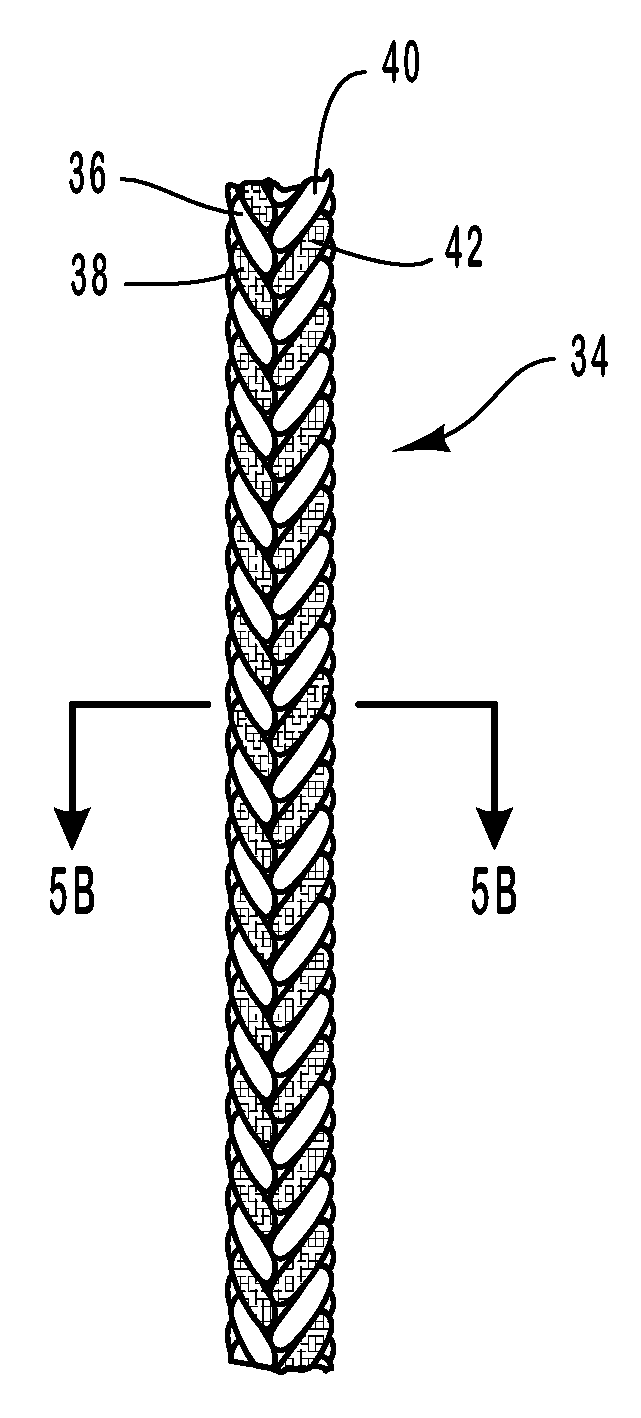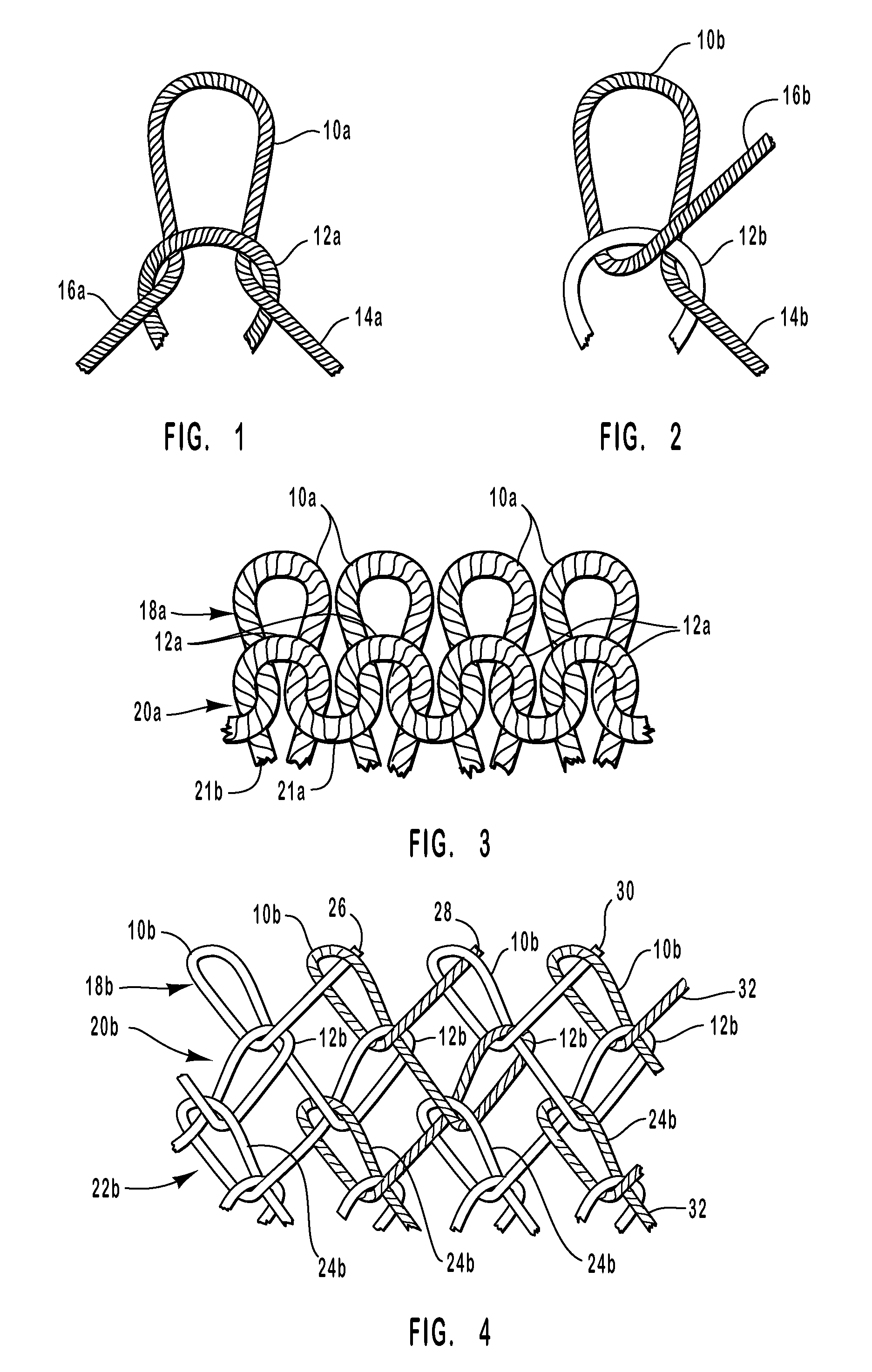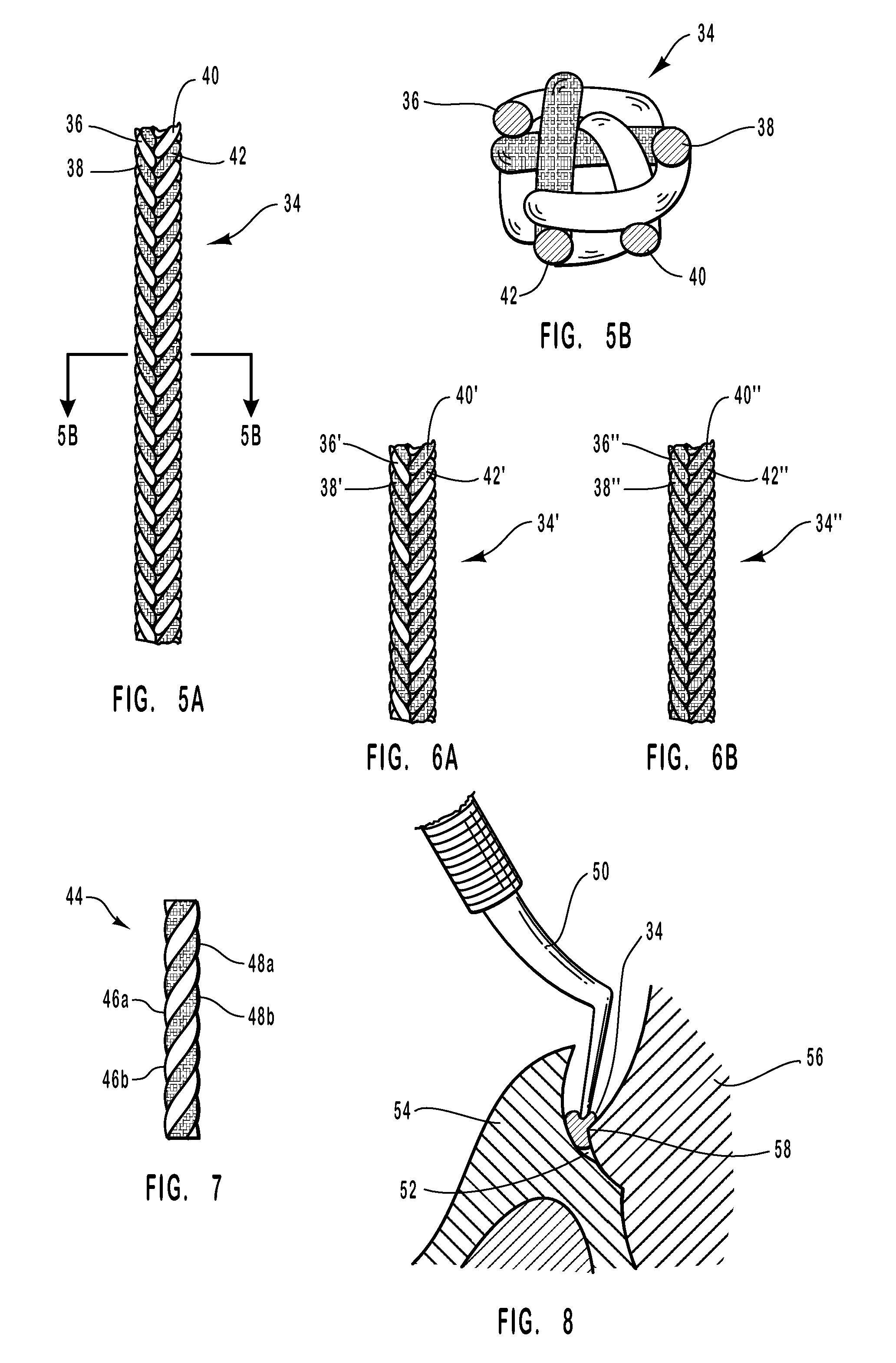Chemically impregnated absorbent gingival retraction cord comprising silk
a technology of absorbent and absorbent retraction cords and silk, which is applied in the field ofgingival retraction cords, can solve the problems that natural fibers (, ) are typically regarded as subject to degradation, and achieve the effects of preserving the overall structural integrity of the knit, and reducing the content of silk
- Summary
- Abstract
- Description
- Claims
- Application Information
AI Technical Summary
Benefits of technology
Problems solved by technology
Method used
Image
Examples
Embodiment Construction
I. Definitions and Introduction
[0028]As used herein, the terms “knitting” and “knitted” relate to a process of using one or more separate strands to form a series of interlocking loops. A “strand” may include one or more fibers which are twisted or otherwise joined together.
[0029]As used herein, the term “silk” refers to protein animal fibers produced by various insects (e.g., the silkworm larvae).
[0030]The present invention is directed to gingival retraction cords that are formed of a material and in a manner that yields a cord that is both resistant to degradation and absorbent so as to allow impregnation with an active agent (e.g. a hemostatic agent). The retraction cord is formed from one or more strands by interlocking a plurality of loops so as to form a knitted retraction cord that is deformable and moisture absorbent. The strand material (as a whole) comprises at least about 50% silk, preferably at least about 80% silk, more preferably at least about 90% silk, and most prefe...
PUM
 Login to View More
Login to View More Abstract
Description
Claims
Application Information
 Login to View More
Login to View More - R&D
- Intellectual Property
- Life Sciences
- Materials
- Tech Scout
- Unparalleled Data Quality
- Higher Quality Content
- 60% Fewer Hallucinations
Browse by: Latest US Patents, China's latest patents, Technical Efficacy Thesaurus, Application Domain, Technology Topic, Popular Technical Reports.
© 2025 PatSnap. All rights reserved.Legal|Privacy policy|Modern Slavery Act Transparency Statement|Sitemap|About US| Contact US: help@patsnap.com



